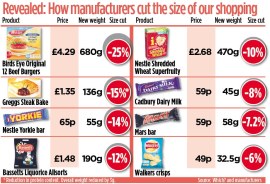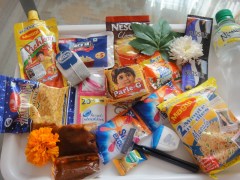India was always the promised land for FMCG with a sizeable population and pent up demand for products that were ‘value for money’. Poor distribution and high landing costs would however keep consumers away from committing to family packs, month packs etc. Another challenge was the large semi urban, rural population were the disposable incomes where significantly lesser and average put down value for a purchase therefore were nominal. Marketing of FMCG Products in India was revolutionized by one major change in trajectory – Sachet Packs. The concept of sachet packs goes back a long time into British India and their distribution of tea – However only in the last 30 years has the concept been really successful. The however remains – Is it time to move out of sachet packs or stay invested in this business model.
Several studies suggest that sachet packs have help drive product penetration but have also resulted in lower consumption levels. Customers in India across a vast social spectrum have started looking that sachet packs more favourably compared to multi-serve large packs not because they can’t spend more – but because sachet packs are ‘available’.
Let’s get into how big the sachet pack business has become – Cavin Care Started the revolution with Chic Shampoos. It has since then moved into all spheres of our lives – CornFlakes @ Rs 10, Carbonated Colas at Rs 5, ‘Chota recharge packs’, Small Biscuit Packets, Tiny Milk Whitener Packets, Small Cosmetic Packs, Re 1 priced mobile VAS Services, Detergent at Rs 2, Hair Oil at 50p, DTH Add On packages, 200 ml milk pouches, ketchup and what not. Every Brand has tried it. Cadbury sold products at 1 rupee to compete with sugar confectionery. Cosmetic Brands came out with Re 1,2,5 packs with 3ml, 4gm, 7.2ml packs to entice the bottom to the pyramid to try out its products.
The primary objective of having sachet is to induce trials and then upgrade the consumer to a bigger/larger pack. However unlike the global market where the upgradation happens, Indian consumers have been disinclined to do so.
The reason: The value offered by a sachet is higher and companies have for long not had the courage to reduce the sachet attractiveness once they achieve penetration.
The pricing of small packs doesn’t leave much by way of margins for the industry. According to industry estimates, smaller packs in most categories are expected to contribute over 75% of total sales in now compared to 30-40% at the turn of the century.
However, this growth is at the cost of margins. The profit margins on larger packs are higher by around 25-30% on an average, compared to a low unit pack. The higher the large-sachet substitution the more it hurts margins.
Several companies have tried to break this pattern with the following strategies
1. Focus Sachets in Rural and Semi Rural while larger packs are distributed in Cities [This did not work due to the diverse social groups in Indian cities – from slums to multi-storied]
2. Launching Bigger Combo Packs – Limited success as these are mainly limited to ‘modern trade’ outlets which is little more than a drop in the FMCG world.
3. Launching Rs 5- Rs 10 Packs instead of Ultra Low price packs – This has worked to some extent, however the problem is just postponed. Rs 5-10 is not exactly what marketers had in mind but beyond this would be a stretch and could jeopardise market shares in case of dramatic changes in pricing.
2 things are happening now in FMCG pricing –
1. Pricing Correction – Value Correction: If a bigger pack offers the same value equation or even worse compared to a sachet and therefore there’s no reason why a consumer should upgrade. This paradigm is getting changed. Suddenly Maggi Packs started getting ligher – 100 gms went down to 75 gm over 3 iterations [Price Remained the same], Britannia Biscuit Packs started giving 1 less biscuit followed by another , Shampoo Packs started having 6 ml, 5ml instead of the earlier 10 ml, 8 ml pouches, coca cola became 200 ml @ Rs 8. Marketers have been over years been able to tweak pricing in a way that is now helping upgrades.
worse compared to a sachet and therefore there’s no reason why a consumer should upgrade. This paradigm is getting changed. Suddenly Maggi Packs started getting ligher – 100 gms went down to 75 gm over 3 iterations [Price Remained the same], Britannia Biscuit Packs started giving 1 less biscuit followed by another , Shampoo Packs started having 6 ml, 5ml instead of the earlier 10 ml, 8 ml pouches, coca cola became 200 ml @ Rs 8. Marketers have been over years been able to tweak pricing in a way that is now helping upgrades.
2. Mass Promotions of Large packs – Kelloggs struggled in India for a very long time. For a brand with small volume of sales the sheer number of SKUs at all kinds of price points confused the markets. However they kept 1 thing simple. the large packs come with a discounted pricing. How often do you see the large pack of shampoo with a free conditioner thrown in with it or a 500 gm pack of surf with a detergent bar free. 1 Kgs packs of health food, washing powder, 1 litre pack of edible oil to come with a jar, container, kids toys, buckets etc These promotions have over time been successful.
India as a country is poised to spend more on consumables – Its good news for FMCG companies. How they go about phasing out their lower end of product bouquet will determine who will gain faster. The consumer is ready to pay more. Can companies offer him value to extract that extra bit.



